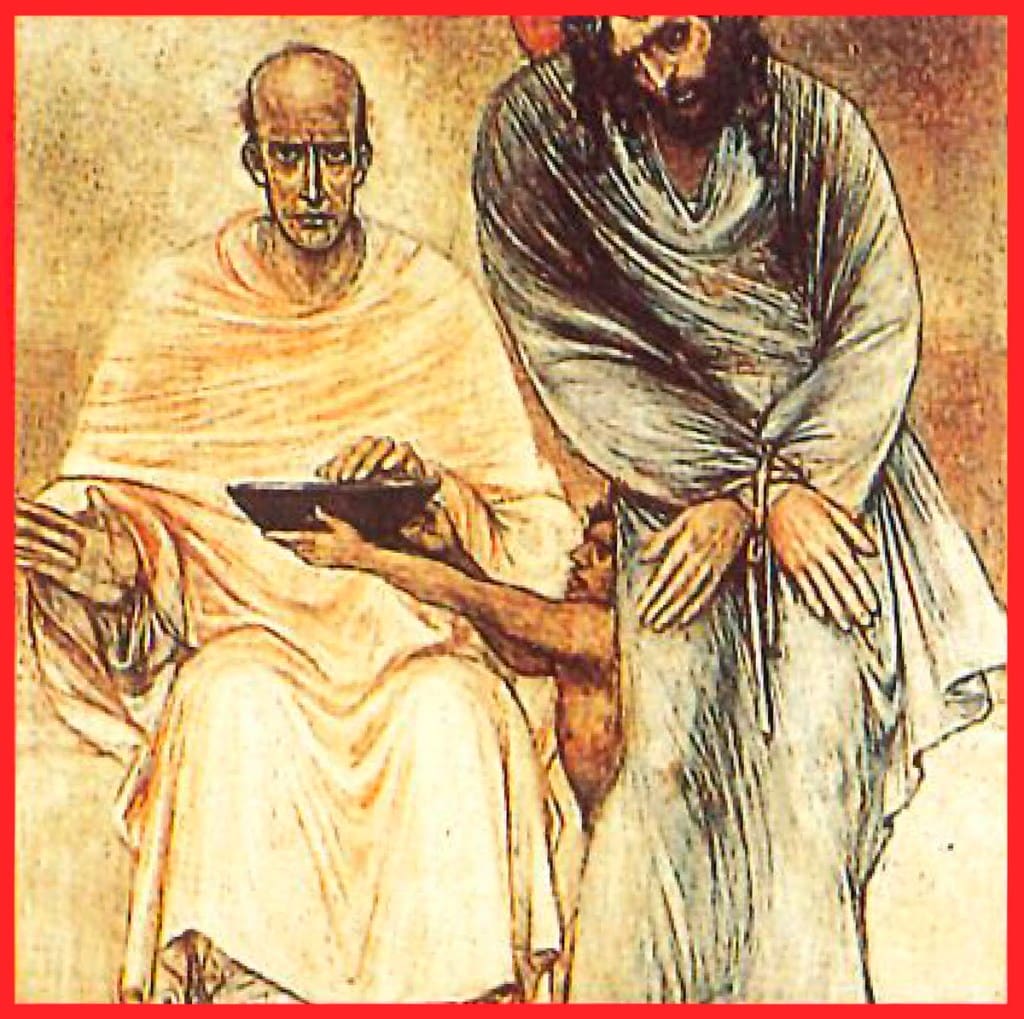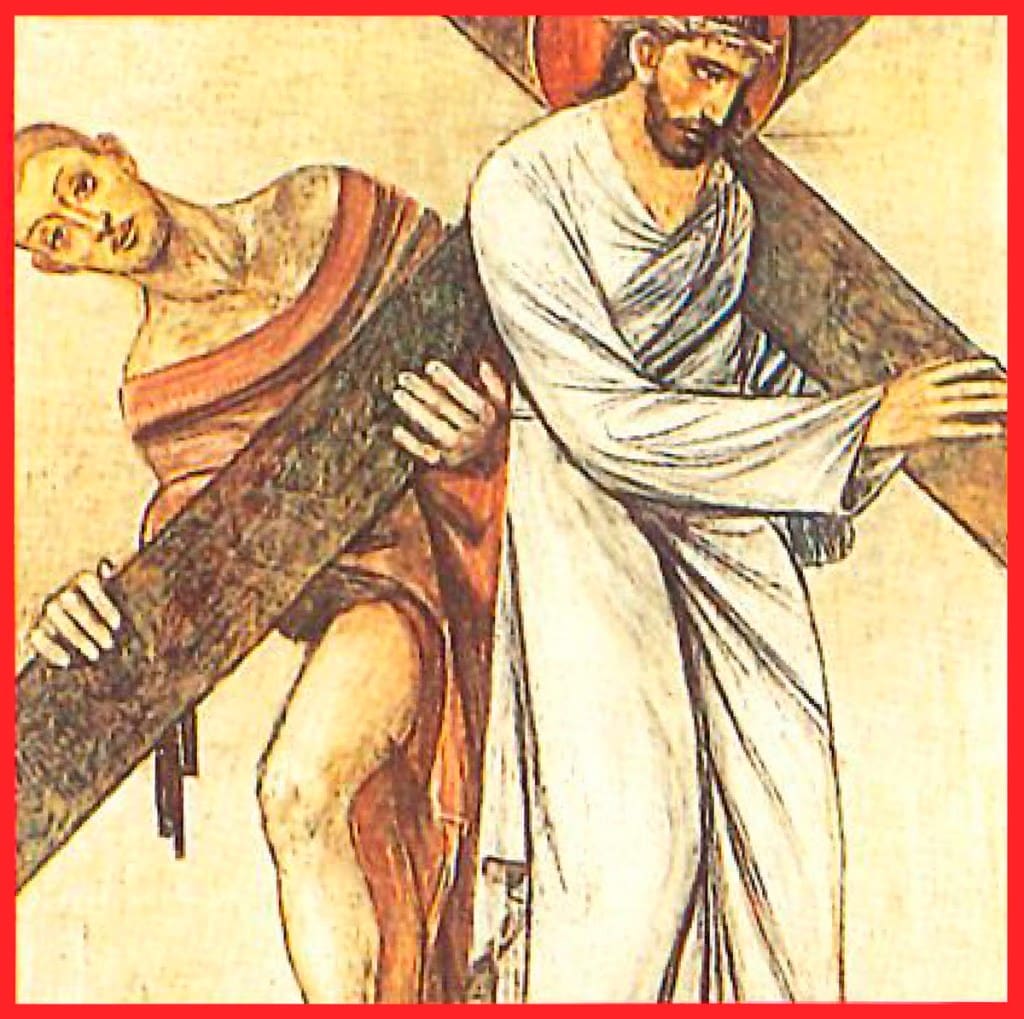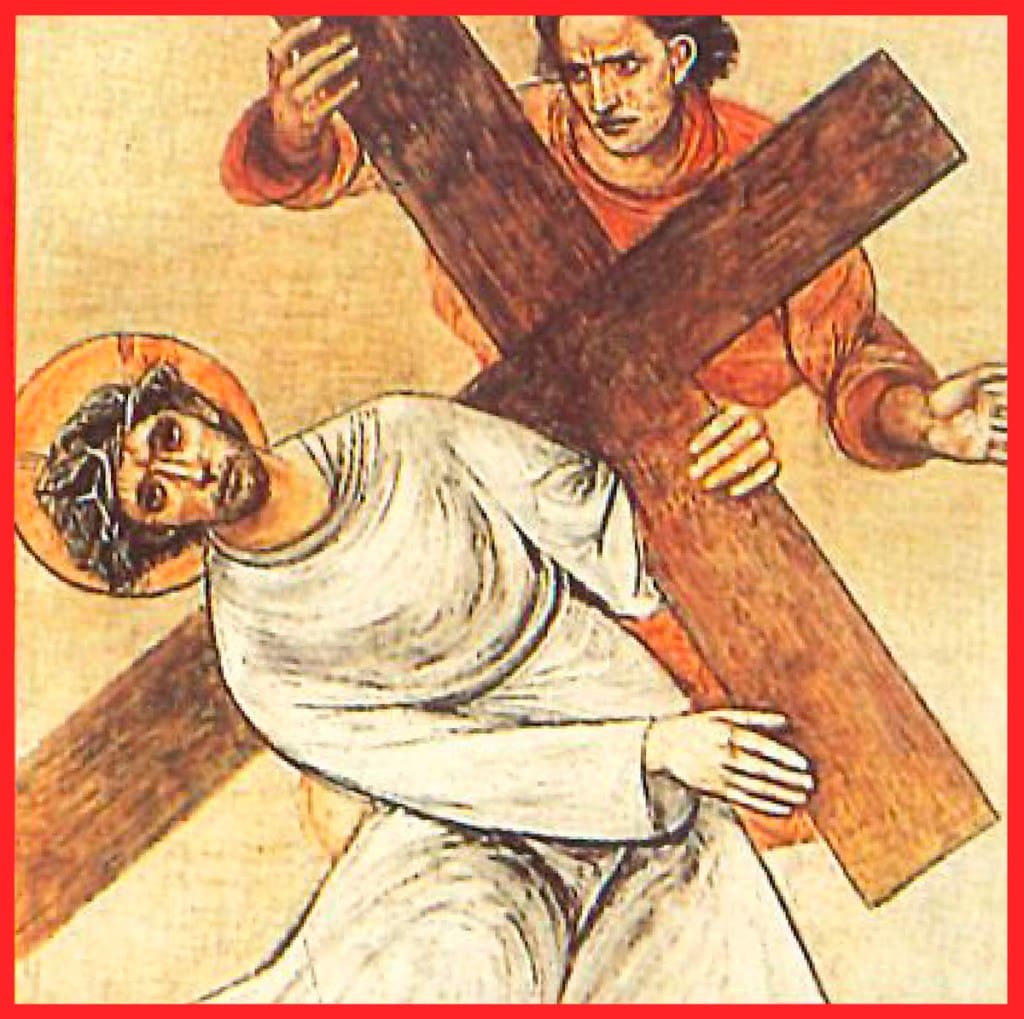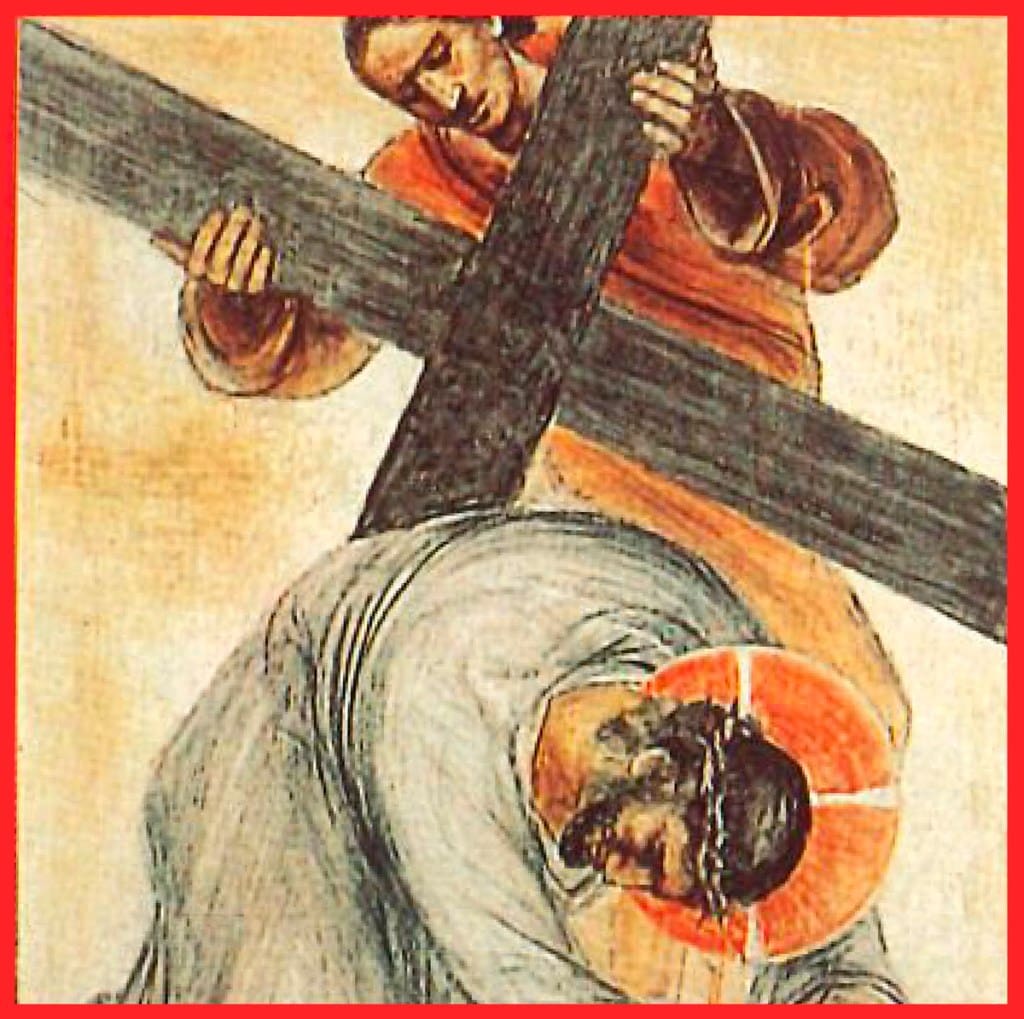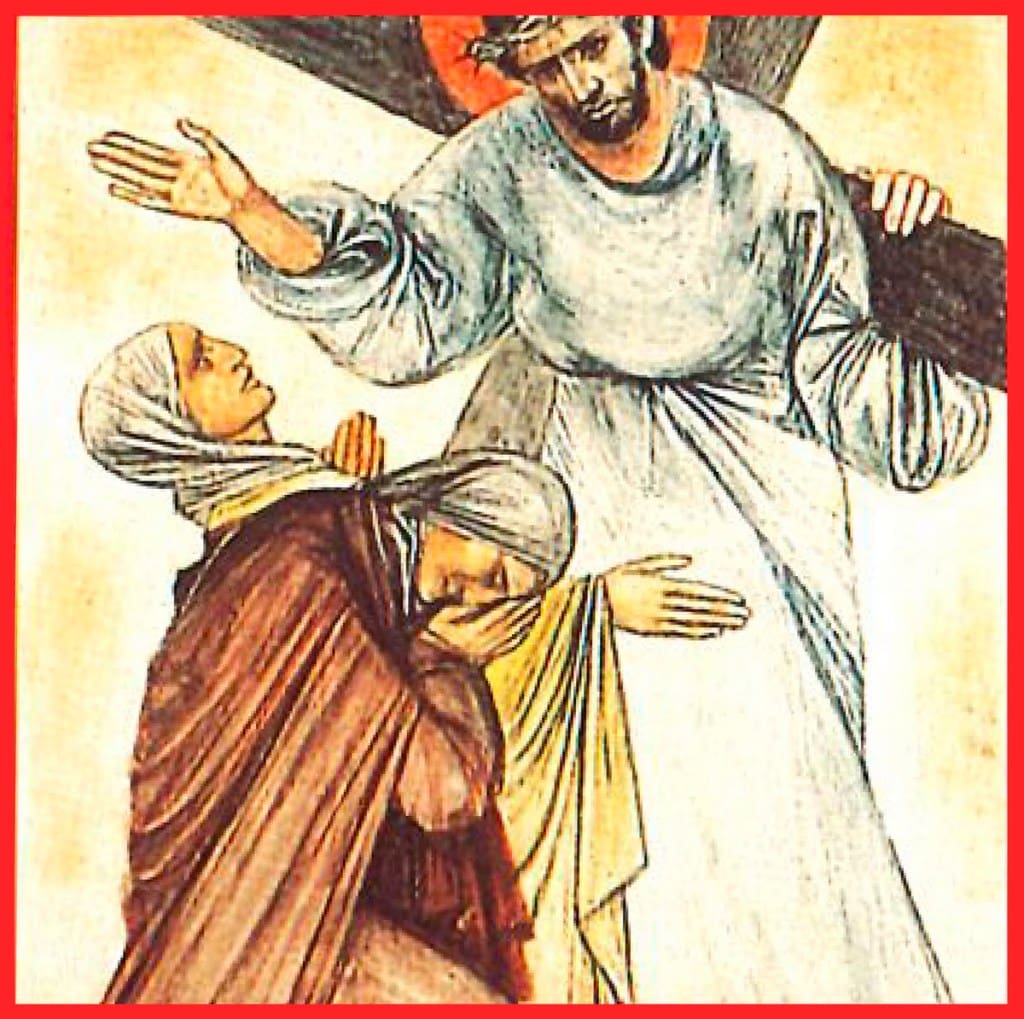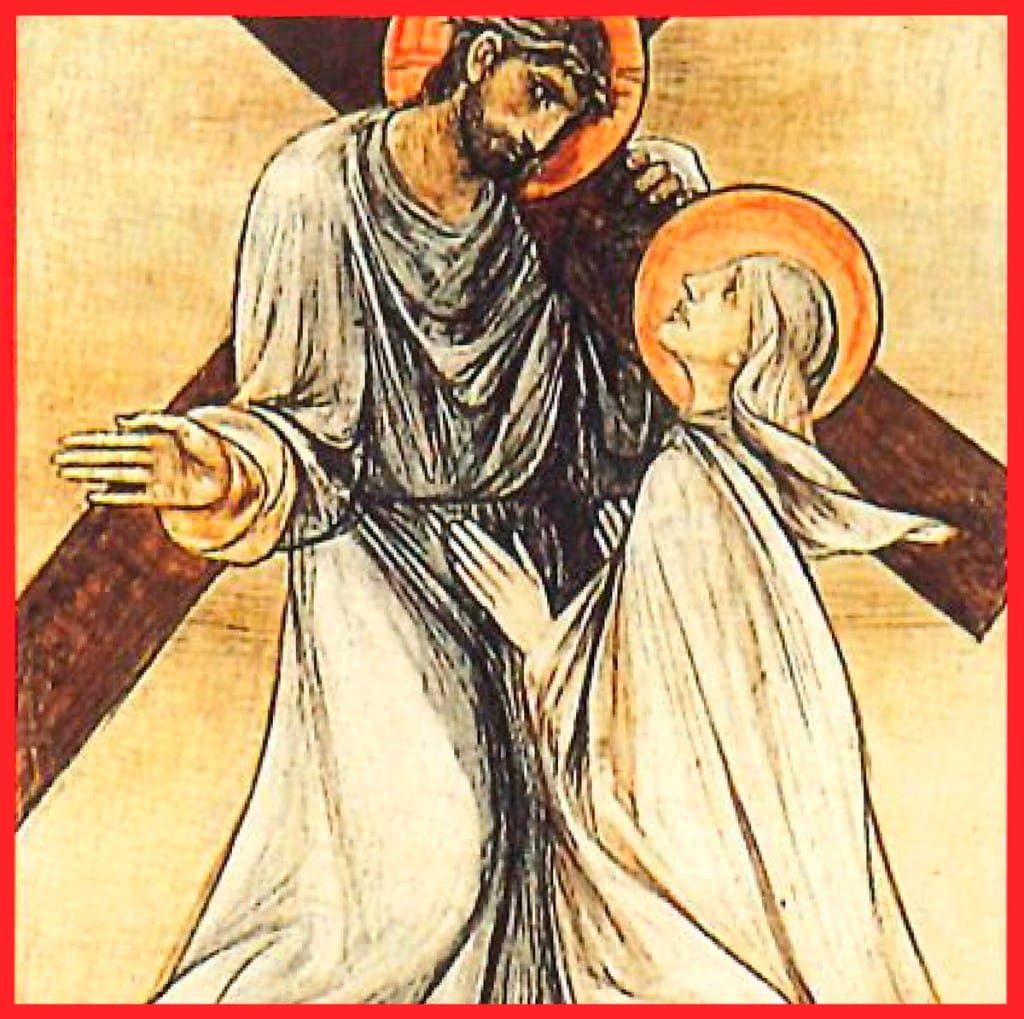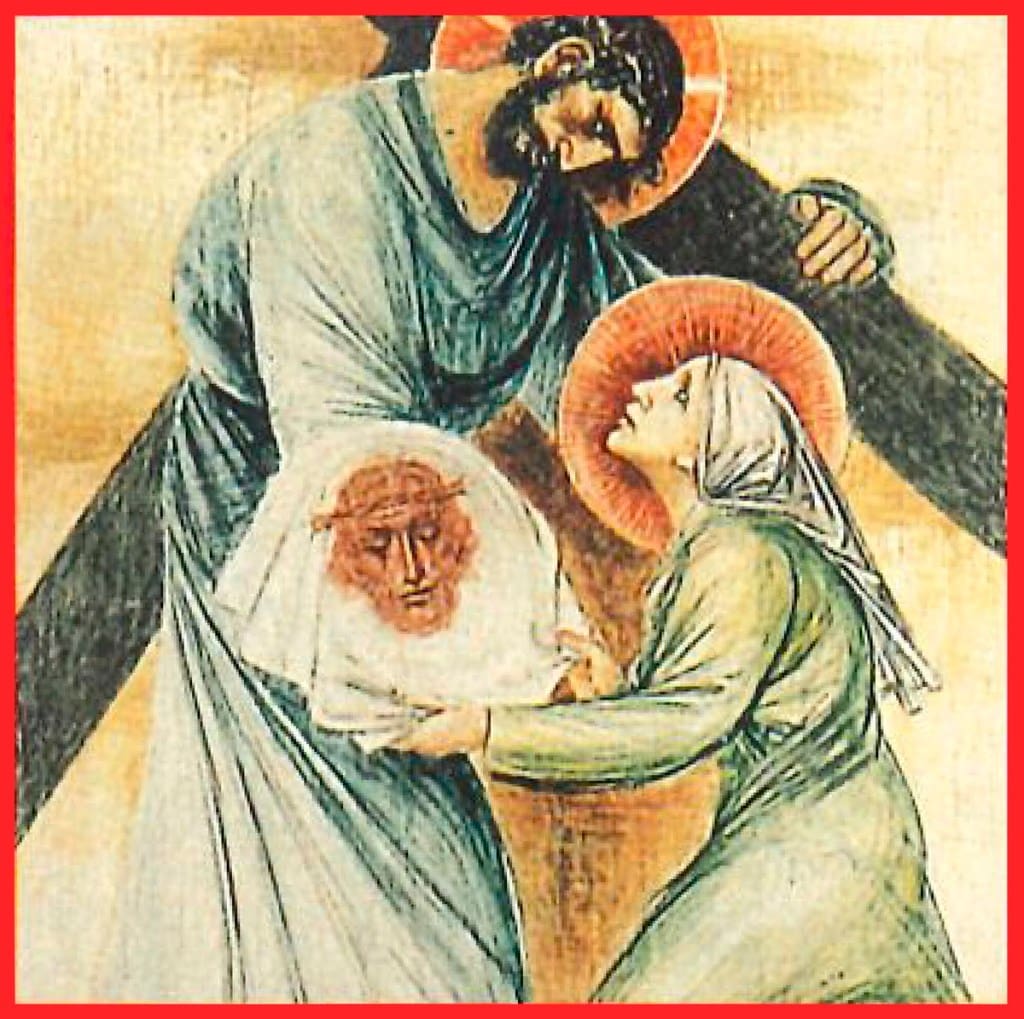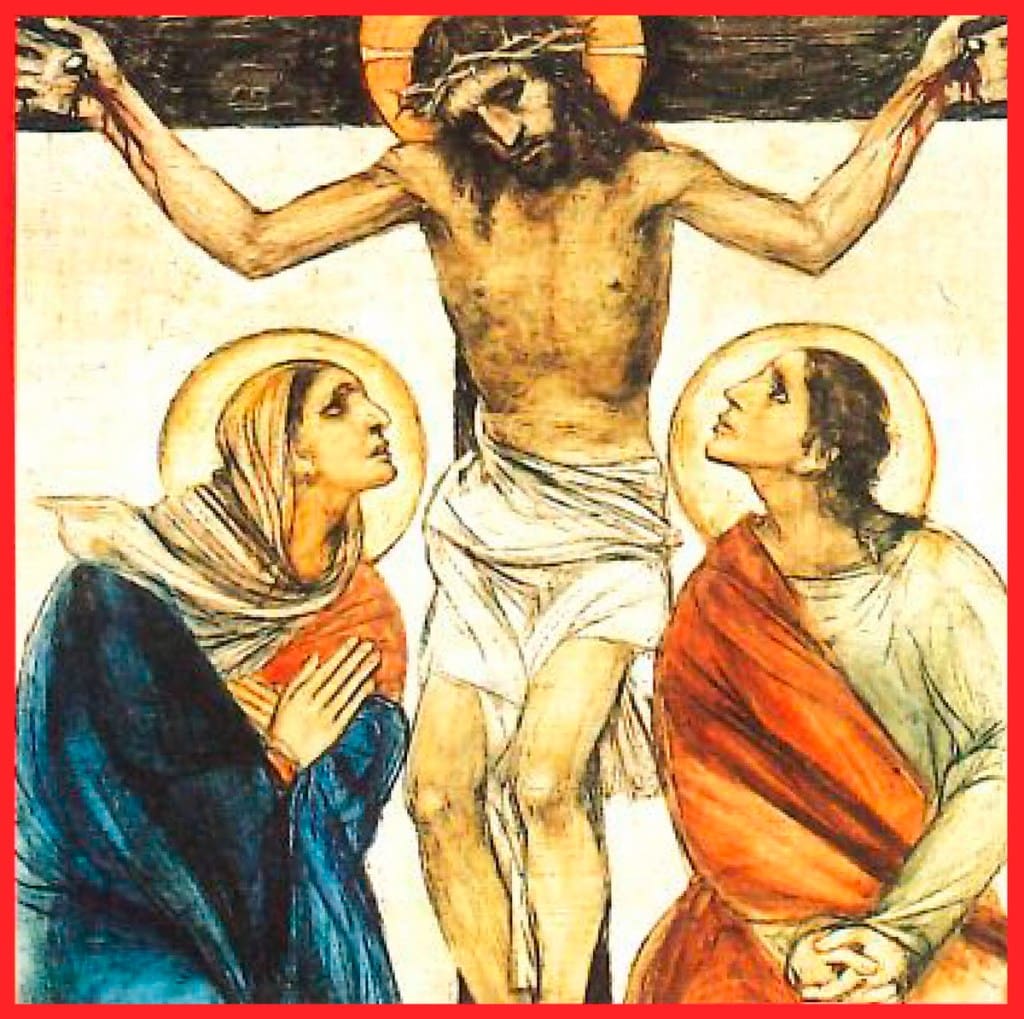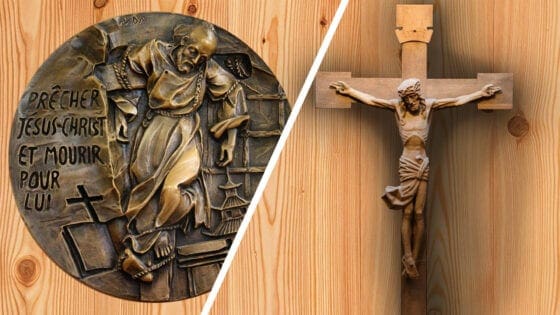
We can draw the following parallels:
1) “There is a baptism with which I must be baptized, and how great is my anguish until it is accomplished!” (Luke 12:50).
John Gabriel wanted martyrdom all his life. He said to his seminarians, showing them the habit of Father Clet, who died a martyr in 1820: “Here is the attire of a martyr … What happiness if we one day had the same fate! He expressed this wish more than once.
2) Jesus began his Passion after three years of public life. John Gabriel also began his Passion after three years of ministry.
3) Jesus, during the Agony in the Garden, exclaimed, “My soul is sorrowful even to death” (Mark 14:34).
John Gabriel suffered a sort of spiritual agony, which lasted three months, during which it seemed to him that God had abandoned him.
4) Jesus, in his agony, was comforted by an angel.
John Gabriel, in his “dark night of faith,” was comforted by a vision of the crucified Jesus that dispelled his anxieties and brought him deep peace.
5) Judas betrayed and delivered up Jesus to the soldiers for 30 denarii.
The son of a catechist betrayed and delivered up John Gabriel too for 30 taels.
6) Jesus had taken with him three companions, Peter, James, and John.
John Gabriel also had, at the time of his arrest, three companions: Thomas who remained faithful to him, like Saint John; Philippe who fled, like James; and, finally, an old catechist who, like Peter, later denied him.
7) Jesus, at the time of his arrest, prevented Peter from using his sword to defend him against the soldiers.
John Gabriel forbids his disciple, Thomas, from using violence to defend him against the soldiers who came to arrest him.
8) Jesus was dragged away like a wrongdoer. “Have you come out as against a robber, with swords and clubs to seize me?” (Matthew 26:55).
John Gabriel was brutally treated during his arrest, loaded with chains and beaten like a bandit.
9) Jesus was dragged from court to court, before Caiaphas, Annas, Herod, and Pilate.
John Gabriel also was dragged from tribunal to tribunal, military tribunal and crimes tribunal, to the Sub-Prefecture, the Prefecture, and the capital of the Province before the governor and the viceroy.
10) Jesus is helped by the Cyrenian on the road to torture (Mark 15:21).
John Gabriel, exhausted, was pitied by a scholar, Lieou Kiou Lin, who had him transported, at his expense, on a litter and even accompanied him during the two days after his arrest that the trip lasted.
11) Jesus was mistreated, insulted, slapped, covered in sputum, and flogged.
John Gabriel was cruelly struck with bamboo blows and leather straps. They spat on his face and slapped him.
12) Jesus was abandoned by his own, except for John and the pious women.
John Gabriel had the pain of seeing two-thirds of the Christians arrested and incarcerated with him apostatize their faith. Only a few remained loyal to him.
13) Peter denied Jesus.
John Gabriel had the pain of seeing his old catechist, Ly, who was very attached to the missionaries, renounce both his faith and his master. Conquered by the torments, he even came to insult and strike him.
14) Jesus was clothed in a purple cloak at Herod’s house and sent back to Pilate like a king in a comedy.
By order of the Mandarin, John Gabriel was clothed in priestly ornaments and thus delivered to the mockery of the populace.
15) Jesus remained silent before Pilate.
John Gabriel, after having confessed his faith, endured the tortures in silence and with heroic patience.
16) From the cross, Jesus prayed for his executioners.
John Gabriel, in the midst of a torture session, knelt down to thank God for allowing him to suffer for his name and he prayed for his executioners.
17) Jesus absolves the good thief by saying to him, “today you will be with me in Paradise” (Luke 23:43).
In the midst of the tribunal, John Gabriel gave absolution to repentant apostates several times.
18) Jesus heard the insults of the Pharisees and of the crowd saying to him, “save yourself, if you are the Son of God, [and] come down from the cross!” (Matthew 27:40).
John Gabriel heard this blasphemy from the mouth of the viceroy, “Now that you are suffering, pray to your God to deliver you from my hands.”
19) On Calvary, Jesus was given gall and vinegar to drink.
John Gabriel was condemned to drink the warm blood of a slaughtered dog to remove a spell, which, according to the judge, made him insensitive to pain.
20) The soldiers jeeringly decked out Jesus with a crown of thorns that they jammed on his head.
John Gabriel underwent an analogous torture. They engraved on his forehead, in Chinese characters, with a point reddened in the fire, these words, “Propagator of an abominable sect.”
21) Jesus, for the sake of the joy that lay before him, endured the cross, despising its shame (cf. Hebrews 12: 2).
John Gabriel walked toward the torment with joy and his face became radiant.
22) Jesus went up to Calvary with two thieves.
John Gabriel was led to death with several criminals who were executed at the same time as he was.
23) From the cross, Jesus exclaimed: “Father, into your hands I commend my spirit” (Luke 23:46).
John Gabriel, upon arriving at the place of the executions, got down on his knees, raised his eyes to heaven, and recommended his soul to God.
24) On the cross, Jesus saw the executioners dividing up his clothing.
As John Gabriel was going to be tied to the cross, the executioners counted on his clothing, which they would share after his death, but his disciples bought them back, as well as the instruments of torture, to keep as relics.
25) “Jesus suffered death outside the Gate” (cf. Hebrews 13:12).
John Gabriel was executed outside the city, at the place of the executions.
26) Jesus was nailed to the cross.
John Gabriel was tied with ropes to a gibbet in the shape of a cross, there to be strangled.
27) Jesus died on Friday at three o’clock in the afternoon.
John Gabriel also died on a Friday afternoon.
28) Jesus had a spear thrust into his right side by a Roman soldier to make sure he was dead.
John Gabriel also received a final blow, a violent kick in the stomach from one of the soldiers.
29) Jesus aroused the compassion of the pious women, the centurion’s profession of faith, and the people’s remorse.
John Gabriel aroused similar feelings among the pagans, who flocked in crowds, murmuring and protesting against the court’s sentence.
30) Jesus appeared to Peter, to Madeleine, and to the Eleven disciples.
John Gabriel appeared to the pagan scholar, his good Cyrenian, who was dying and converted. He appeared to other trustworthy people. At his death, a large cross appeared in the sky and was seen by a crowd of people, even far away.
31) At the foot of the cross, Jesus saw his Mother filled with sublime resignation.
Upon learning of his death, John Gabriel’s mother said: Why should I hesitate to make the sacrifice of my son to God. The Blessed Virgin did not hesitate to make the sacrifice of hers for our salvation.
32) Those responsible for the death of Jesus had a sad end: Herod and Pilate were deposed and died miserably in exile. Judas hanged himself. Caiaphas was dismissed after a year.
Those responsible for the death of John Gabriel also ended miserably: the Mandarin who arrested him was deposed and hanged himself; the very cruel viceroy was denounced to the Emperor, stripped of his possessions, and sent into exile. Others either were condemned to exile or died prematurely.
